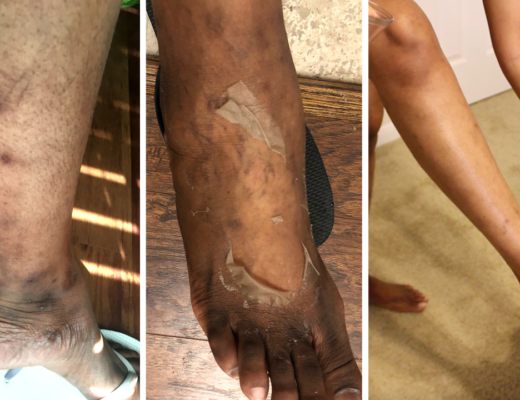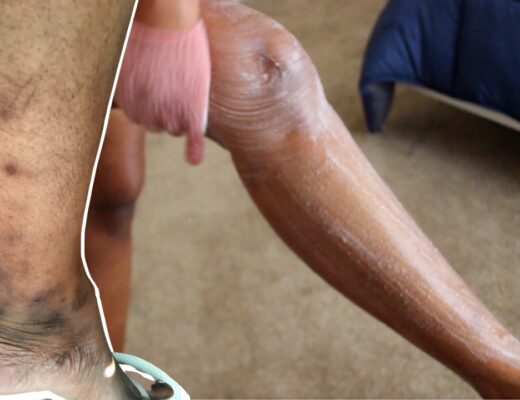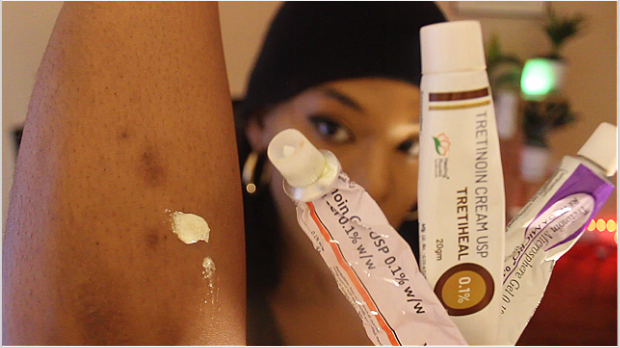Hi everyone, my name is Rita, and today, we will be discussing chemical peels that are best for hyperpigmentation. We’ll look at some before and after visuals, when to expect results, how often we need to use chemical peels for best results, and how many one needs to achieve their desired goal.
There are about four chemical peels that are best for treating hyperpigmentation
- Glycolic acid peel
- Lactic acid peel/mandelic acid peel
- Salicylic acid peel
- TCA peel
- For darker skin types, lactic acid or mandelic acid is the safer option-not that you can’t use other peels; you can, just that you would need to exercise caution.
Let’s get into the video.
Glycolic acid has a small molecule size which makes it able to penetrate the skin deeply. It also helps retain moisturize in the skin, it also improves the skin’s firmness- which makes it a great option for anti-aging. Glycolic acid peels in concentrations of 20% to 70% are safe for skin of color.
Lactic acid is very similar to glycolic acid in terms of results but a lot less irritating because of its larger molecular size compared to glycolic acid. Also, compared to glycolic acid, it doesn’t penetrate the skin as deeply, so it is perfect for sensitive skin. Additionally, it is an excellent option for dry skin, and can be beneficial for lightening dark spots when used at higher concentrations.
Salicylic acid is derived from willow bark. Willow bark contains potent anti-bacterial and anti-inflammatory properties. Salicylic acid peel is known to reduce inflammation and sebum production, so it is excellent for acne-prone skin, acne scars, uneven skin texture, uneven skin tone, and even melasma.
TCA peel is my fave! But also the riskiest. According to the book, Cosmetic Dermatology for Skin of Color, TCA peel is considered the gold standard in the industry. This is because it penetrates the skin deeper than the peels mentioned above and can lift pigmentation like nothing else. But like I said earlier, the risk of further pigmentation, when not done right, is very high, so caution! Also, it requires 7-10 days of recovery.
When to expect peeling?
For these peels, you may or may not experience peeling depending on the strength you use—for example, lactic acid. I rarely ever peel on lactic acid, even in high concentrations. For TCA, though, the story is different. Even at lower concentrations, you would peel here and there. Typically it takes about 4-7 days for the peeling to start, and in less than a week, it’s all peeled off.
How often should you be using it for best results?
Glycolic acid is generally performed every 3 to 4 weeks for a total of four to six treatments. Lactic acid three weeks for a total of 4-6 treatments. Salicylic acid is administered 1-2. weeks for 6-8 weeks. TCA Sessions are conducted monthly, usually about four in total.
Recommended video: https://thepigmentedlife.com/best-chemical-peels-for-hyperpigmentation/
Peels Mentioned
▶ TCA https://bit.ly/3zBlpWq
▶ Glycolic acid https://amzn.to/3z4VJkH
▶ Salicylic acid https://amzn.to/3z4HhJ
▶ Lactic acid https://amzn.to/3cmOcUJ
▶ Mandelic acid https://amzn.to/3cmp40g
S O U R C E S
Alam, M., Bhatia, A., Kundu, R., Yoo, S., & Chan, H. (2009). Cosmetic Dermatology for Skin of Color (1st ed.). McGraw-Hill Education / Medical.
Rigopoulos, D., & Katoulis, A. C. (2017). Hyperpigmentation (1st ed.). CRC Press.
wikiHow. (2021, May 23). How to Apply a Chemical Peel. https://www.wikihow.com/Apply-a-Chemical-Peel




